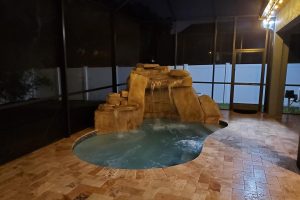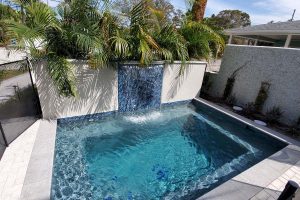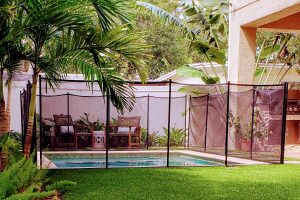Plunge Pools
Plunge Pools
Plunge pools are defined as deep depressions in stream bed where water cascades down a rock formation. A plunge pool may also be a term for a depression of water in a pool.
What is a Plunge Pool?
An plunge pool is tiny usually deep pool intended for the purpose of relaxing and wading. They are perfect for those who like relaxing on the steps of a pool sipping a cup of tea in summer or for those living in hot climates and utilize their pools to cool off. Because of their size you are not able to take a dip in a plunge pool however you may be able to perform other kinds of exercises like water
aerobics.
Installing A Plunge Pool
Plunge pools are an affordable option for homeowners with limited space in the backyard. They can be installed by pool builders in the yard or indoors. Their size is comparable to that of a swimming pool, but require far less materials and labor.
You could substantially accentuate the value of your house with one of these swimming pool options. The appearance of your residence can
also be notably improved by the addition of a pool. Besides giving a good return on your expense, it can also be beneficial to your finances. Plunge pools are a great way to cool off during hot days. They can be induced with landscaping for an attractive finish. Some even offer wraparound bench seats for easy access to the water.
The cost of a plunge pool depends on various factors. For instance, how much do you want the pool, what features do you want, and how many feet of space you have in your backyard? Plunge pools can be made of fiberglass, concrete, or vinyl. Fiberglass is the most adaptable. You will have to spend more if you go for a vinyl model. Vinyl is a much more fragile material than fiberglass, and will need to be replaced more frequently.
Costs Of A Plunge Pool
Plunge pools are expensive due to the materials, excavations, and labor involved. The best way to plan in advance is to start early. Also, if you’re in a region that’s known for long delivery times, you may need to allow extra time to order your supplies. Materials costs can be higher than the cost of an above-ground pool. Concrete is the most common material for plunge pools, though vinyl and fiberglass models can be used. You can also choose from mosaic and glass tile, which can add a little more to the plunge pool price.
Functions of a plunge pool
Plunge pools have many uses. They can help you get a good workout, they are great for cooling off and they are a fun way to spend an afternoon. It’s even better that they’re not all that expensive to purchase or install. However, plunge pools have their limitations. Most of them can’t handle large parties or swimming laps. Also, they don’t offer the same design options as larger pools. For instance, most plunge pools are only shallow. If your kids are used to diving in, you may want to consider a different pool.
Plunge pools also don’t have the space to hold a lot of people. So, if you have a small yard or a backyard that has a tendency to be crowded, it might not be a good idea to invest in a plunge pool. Plunge pools can be an excellent addition to your home. They are perfect for the environment as well. As opposed to conventional pools, they use fewer materials, require less maintenance and they are quicker to heat and clear.
Types of Plunge Pool
The form of a regular pool may range from oval to rectangular to round, but a swimming pool is commonly in the rectangular version and is the space- and energy-efficient option. Different private pools may have features like fountains, a sitting area, or even a grassy yard, possibly even with water features and a splash pad.
Size of Plunge Pool
Like traditional pools, plunge pools can be operated from a fixed location. But plunge pools can grow as large as 10 22 feet in length and 6 1 2 to 15 feet wide. The depth ranges from 5 to 7 feet, and the lowest point in a plunge pool is almost never uneven. The most popular sizes of plunge pools are 10×20 feet and 5 3 2 feet. Plunge pools made by pre-cast or pre-fabricated models are 5 3 2 feet in length and 7 1 2 feet high.
How are Plunge Pool Made?
Custom-made plunge pools can be built either in your backyard or bought from a company. The vast majority of plunge-pools are traditionally formed using dirt, and the surface is covered inside with a vinyl liner to create a modern look.
Taking care of a plunge pool
Those who want the benefits of a pool but do not have the space to accommodate one will enjoy plunge pools. They are easy to maintain and can last for a long time. It’s the least expensive option available in comparison with a regular-sized swimming pool. Just be sure you’re careful. If you don’t take good care of your plunge pool, you might end up with a dirty pool that isn’t safe for swimmers. This is why you need to know the proper steps for keeping your plunge pool clean.
The first step is to skim the water daily. This will remove any debris from the bottom of the pool. Debris can cause bacteria to grow and create an environment conducive for algae to thrive. The second step is to keep your pool deck clean. This can be done by trimming the hedges and trees around the pool. You can also use a manual scoop net or vacuum to pull out any debris that has accumulated.



